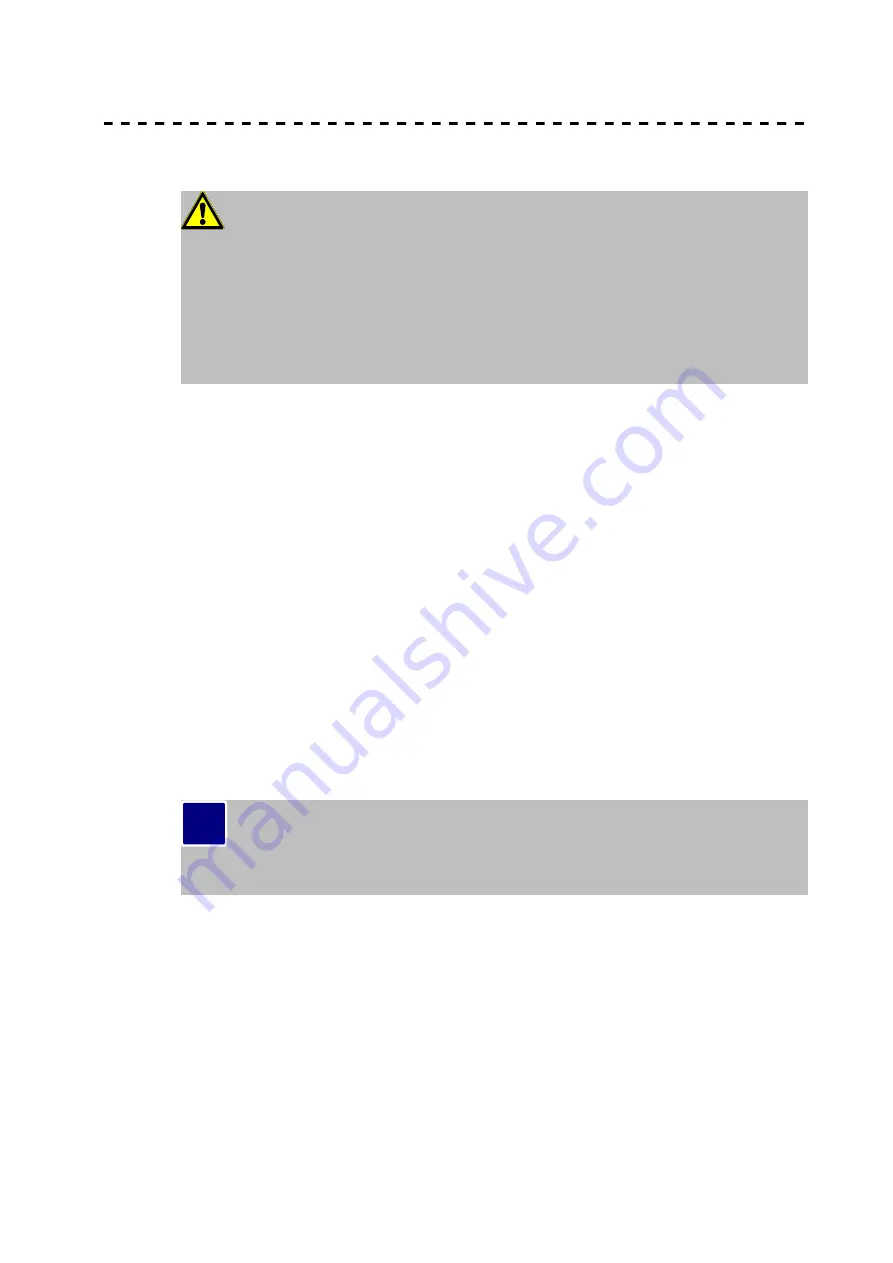
6
Installation
and Operation
EDBC250SIO | 2.0
207
6.4.4
Output Parameters
CAUTION
Setting the Test Pulse Rate
In single-channel applications (inputs same as outputs), adapt the test pulse fre-
quency to the application. In applications with frequent changes of state, the
test pulse frequency should be at least 100x higher than the time of change of
application state.
In single-channel applications, the error response time of the inputs should be
3x the test pulse interval (25 Hz = 120 ms).
Refer to section
►
6.4.2 FSoE Parameters.
Parameter "Outputs external Ground"
Enable if the sensor is not connected to module terminal SO X- but uses an external ground
connection. Pick from a drop-down list provided by the configurator software. Linking the sen-
sor to an external ground connection instead of terminal SO X- disallows you to control an ex-
ternal 24 VDC power supply.
Also set this parameter if output SO X+ supplies an electronic load such as a digital input of an
I/O module.
Parameter "Used Outputs"
Enables the outputs used.
Pick from a drop-down list
Parameter "Test pulse duration output"
Test pulses cyclically check the digital outputs of the Safety I/O-module for faults such as short
circuits or internal defects. Parameter "Test pulse duration output" sets the time of a test
pulse allocated to a digital output. If you connect a capacitive load to the digital power output,
you may have to modify the test pulse duration.
Note, information
Test pulses to the outputs
Match the connected loads and the test pulse duration setting such that the test
pulses are prevented from switching the loads.
Parameter "Test frequency output"
Test pulses cyclically test the digital outputs of the Safety I/O-module. Parameter "Test fre-
quency output" sets the switching frequency and, thus, the frequency of test pulses allocated
to a digital output. Adapt this parameter to real-life conditions particularly when using induc-
tive or capacitive loads.
I
















































